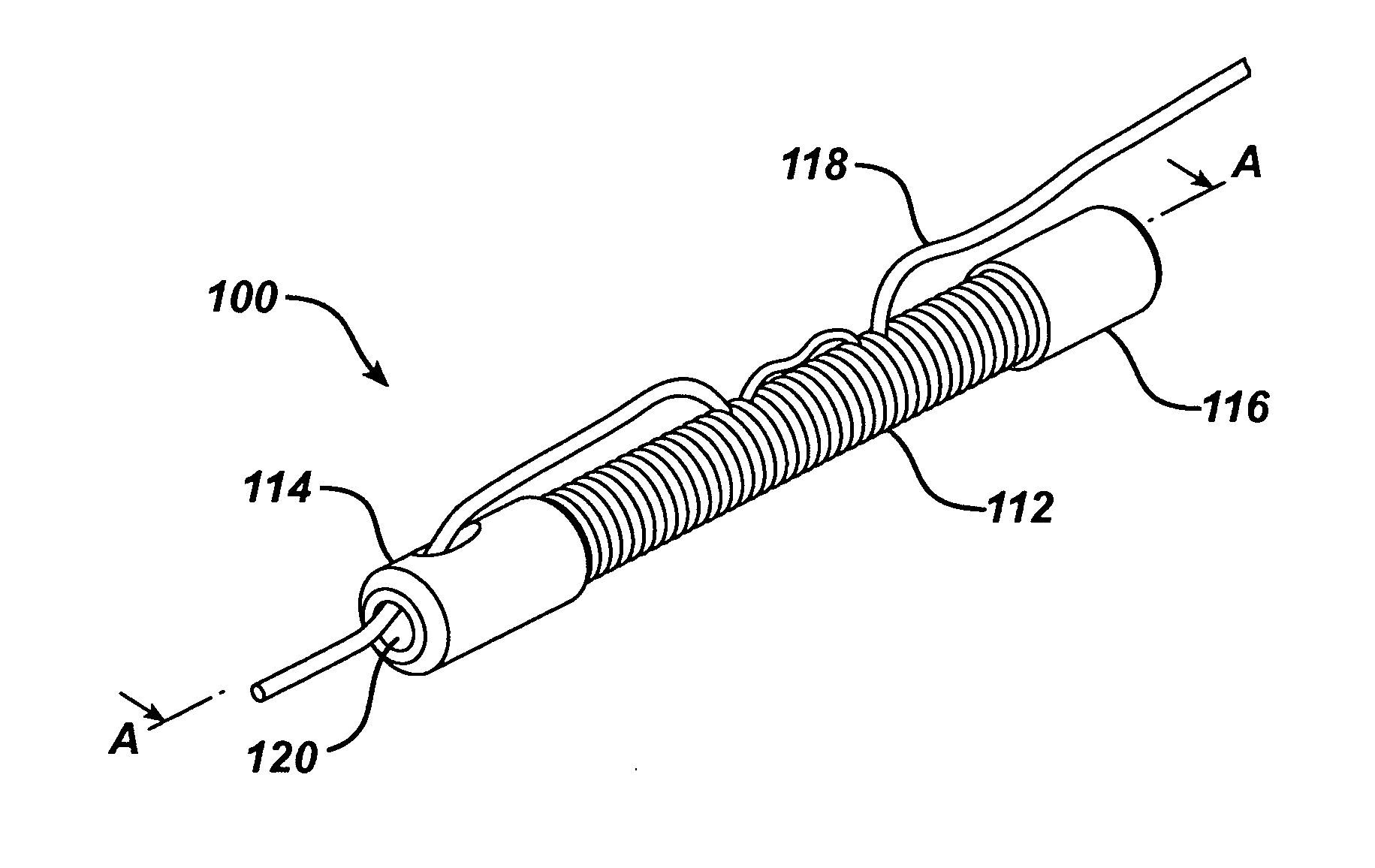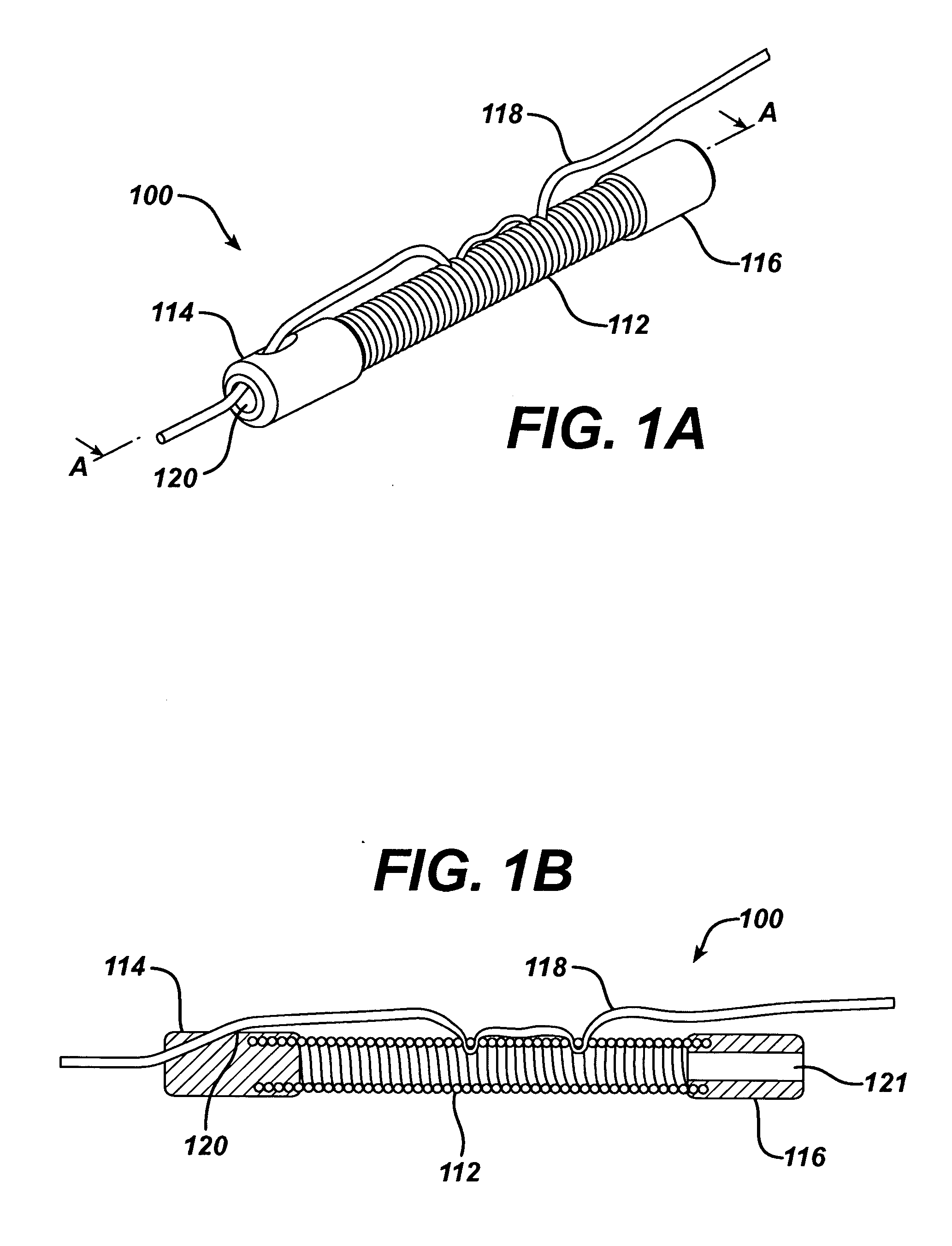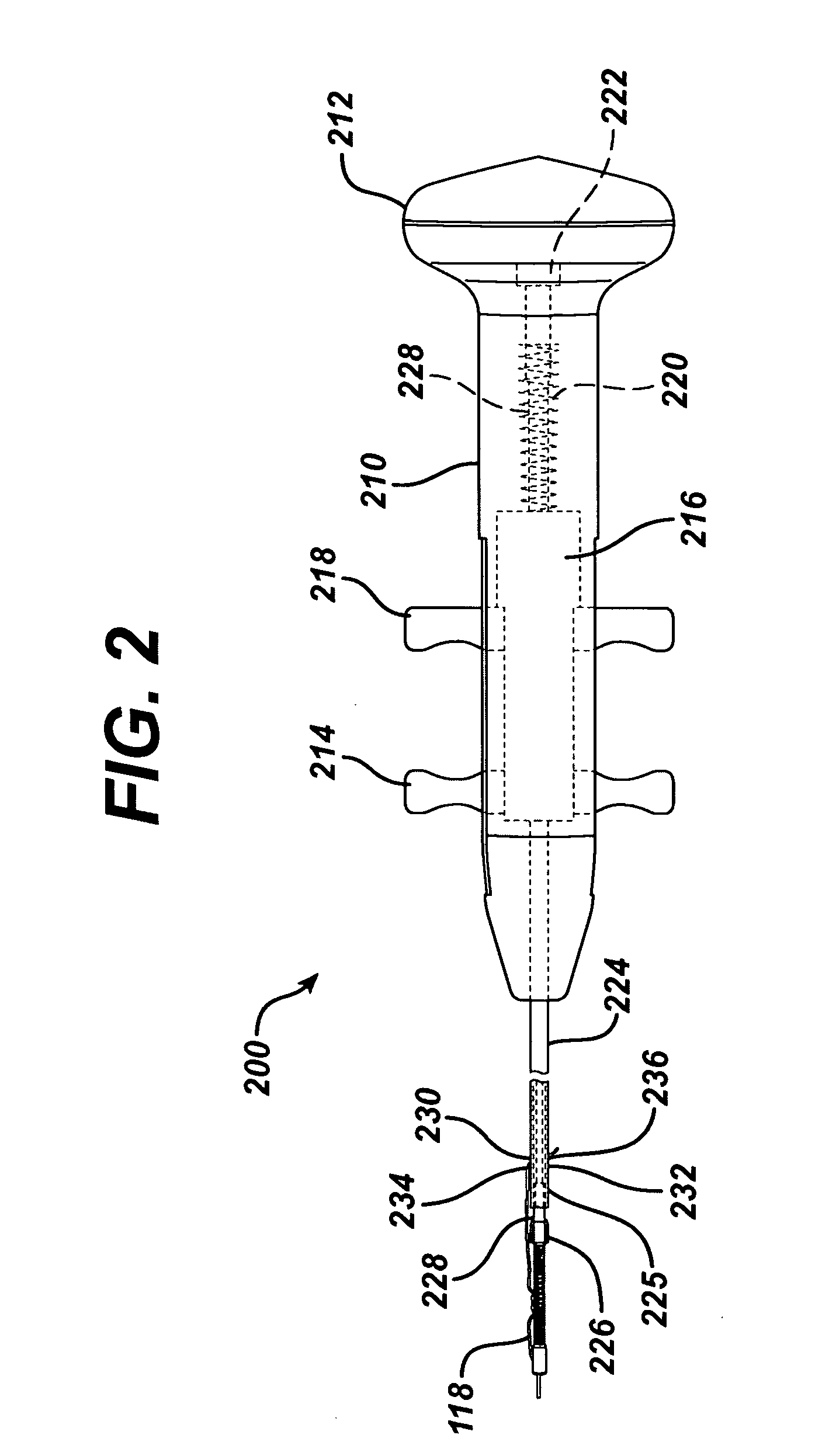Devices for locking and/or cutting a suture
a technology of sutures and devices, applied in the field of endoscopic suturing devices, can solve the problems of multiple instruments, add complexity to medical procedures, long recovery period of patients, etc., and achieve the effect of avoiding more invasive laparoscopic procedures
- Summary
- Abstract
- Description
- Claims
- Application Information
AI Technical Summary
Benefits of technology
Problems solved by technology
Method used
Image
Examples
first embodiment
[0051]FIG. 1A illustrates a perspective view of a suture lock assembly 100 in accordance with the invention. Suture lock assembly 100 includes an extension spring 112 arranged between a distal endcap 114 and a proximal endcap 116. The endcaps preferably have an outer diameter of about 0.07 inch. Extension spring 112 is formed of any nontoxic, noncorrosive metal, such as stainless steel, and distal endcap 114 and proximal endcap 116 are formed of, for example, molded plastic or stainless steel. Also shown in FIG. 1 is a suture 118 threaded first through a hole 120 in distal endcap 114 and then through multiple coils of extension spring 112, wherein suture 118 is clamped because of the pressure of the coils and the tortuous path within the coils. Suture lock assembly 100 is not limited to a single suture 118 installed therein; a plurality of sutures 118 may be engaged within a single suture lock assembly 100.
[0052]FIG. 1B illustrates a cross-sectional view of suture lock assembly 100 ...
second embodiment
[0083]FIG. 8 illustrates a perspective view of a suture lock assembly 800 in accordance with the invention. Suture lock assembly 800 includes a cylindrical-shaped lock body 810 that further includes a plurality of suture channels 812 that run therethrough, and which have an associated plurality of locking holes 814 arranged on the outer surface of lock body 810. Suture lock assembly 800 further includes a lock sleeve 816 that further includes a cavity 818 (shown in FIGS. 9 and 10) within which lock body 810 is inserted. Preferably there is a clearance of 0.001 inch or less between the outer surface of the lock body 810 and the inner surface of the lock sleeve 816. Lock body 810 further includes a first groove 824 and a second groove 826, which are detents formed around the outer perimeter of lock body 810. Lock sleeve 816 further includes a first locking ring 820 and a second locking ring 822, which are raised regions protruding from the inside perimeter of cavity 818 that are sized...
PUM
 Login to View More
Login to View More Abstract
Description
Claims
Application Information
 Login to View More
Login to View More - R&D
- Intellectual Property
- Life Sciences
- Materials
- Tech Scout
- Unparalleled Data Quality
- Higher Quality Content
- 60% Fewer Hallucinations
Browse by: Latest US Patents, China's latest patents, Technical Efficacy Thesaurus, Application Domain, Technology Topic, Popular Technical Reports.
© 2025 PatSnap. All rights reserved.Legal|Privacy policy|Modern Slavery Act Transparency Statement|Sitemap|About US| Contact US: help@patsnap.com



